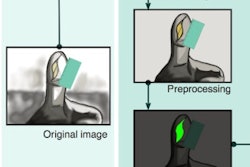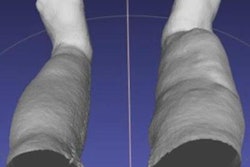"In the past five years, virtual reality, immersive reality, and now augmented reality have gained traction with the public," Dr. Colin McCarthy told AuntMinnie.com. "Although originally designed for the gaming community, we think this technology has huge potential for medical education."
For the past three years, McCarthy and colleagues have been using virtual reality and 360° video technology to develop training modules for radiologists, with a particular focus on interventional radiology.
In this study, they created and recorded an emergency contrast simulation -- a patient experiencing a severe anaphylactoid reaction -- using a 360° camera rig and seven high-resolution GoPro Dual cameras. Each participant viewed the simulation through a Samsung Gear virtual reality headset.
Among the 19 nurses, radiologic technologists, and physicians who participated, 14 agreed that the headset has a role in training physicians; the remaining five said it "maybe" has a role.
When viewed through a virtual reality headset, an immersive 360°contrast emergency scenario facilitates the training of radiologists for a potentially serious medical emergency, the researchers concluded.
"For facilities that do not have a pre-existing simulation lab, [a virtual reality headset] may allow technologists, physicians, and nursing staff to review the steps involved and keep up to date with current guidelines," McCarthy said.



















